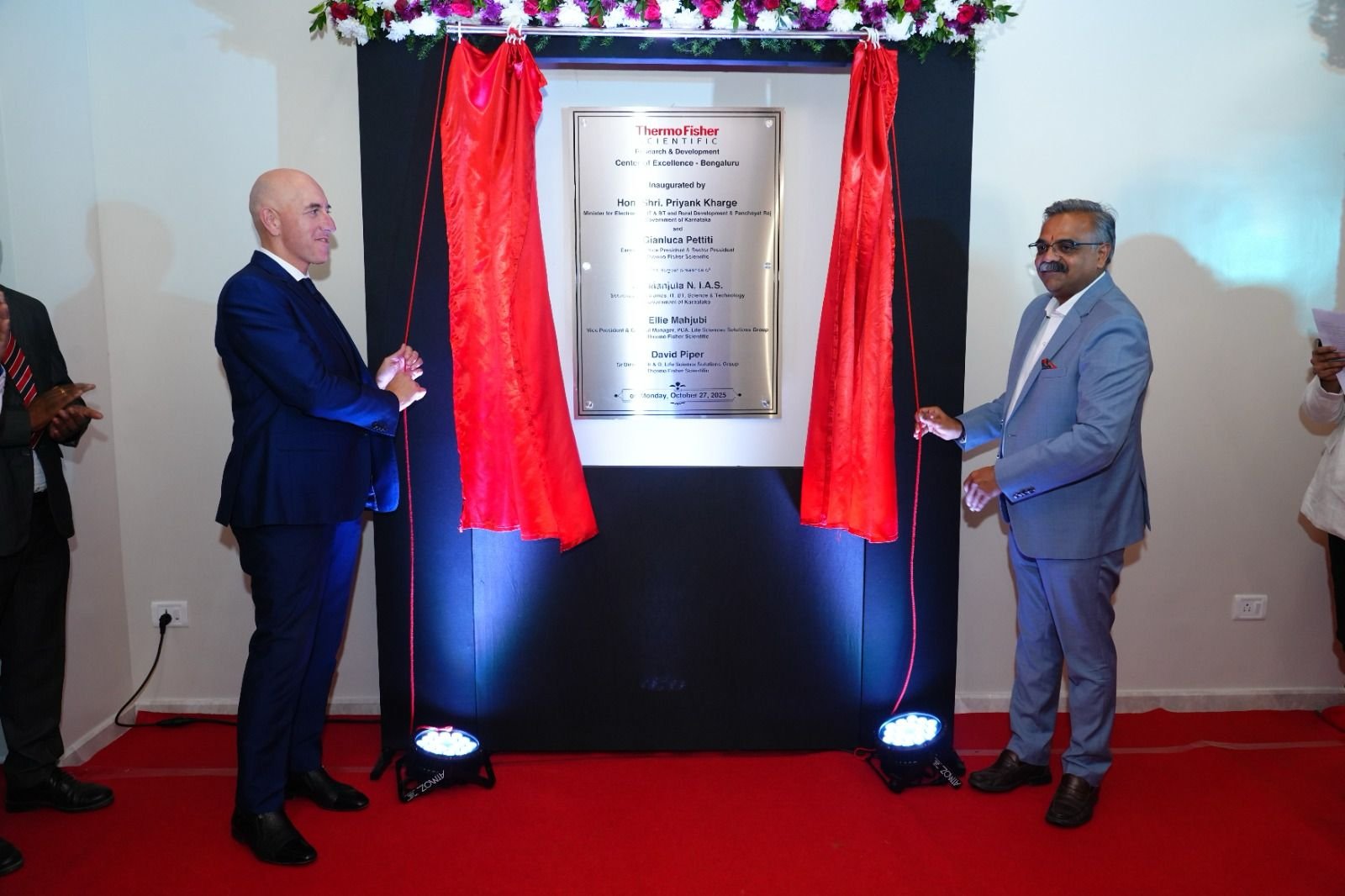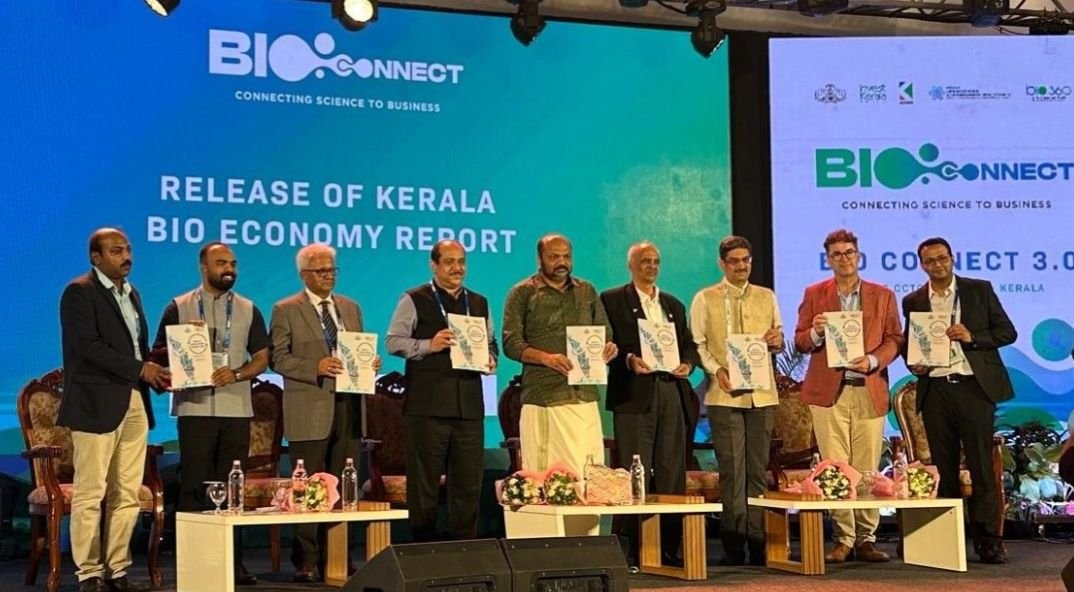How Waste Management Strategies Can Transform Indian Pharma Manufacturing
September 01, 2025 | Monday | Views | By Aarthi Janakiraman, Research Director, Advanced SciTech, Everest Group
Sustainability will be a key success factor as India's pharmaceutical industry enters its next stage of expansion. Pharma manufacturing has a revolutionary chance to improve operational efficiency and safeguard the environment and public health through waste management. Use cases from industry implementation demonstrate that progressive waste management is feasible because enterprises are developing innovative solutions, technologies are available, and supportive policies are starting to emerge.

The pharmaceutical industry’s commitment to sustainability is considered imperative, and central to this is waste management—a critical challenge for pharma manufacturers worldwide and particularly acute in India’s rapidly growing pharmaceutical sector. Globally, waste management in pharmaceutical manufacturing is increasingly characterised by advanced, circular economy practices. It is well established that pharmaceutical manufacturing generates substantial hazardous waste, including chemical solvents, expired medicines, and biological waste.
Technologies such as solvent recovery systems, enzymatic biocatalysis, and continuous manufacturing processes can significantly reduce waste generation. For example, continuous manufacturing technologies can lower solvent usage by up to 50 per cent compared to traditional batch processing, and biocatalysis can significantly reduce hazardous byproducts and facilitate safer disposal practices.
Indian pharma companies have traditionally focused on compliance-driven waste management, often limited to disposal and basic treatment. It often faces significant environmental impacts from insufficient waste management practices, generating thousands of tonnes of hazardous waste every year, posing threats to ecosystems, human health, and community well-being. While Tier 1 companies such as Cipla, Dr. Reddy’s, and Lupin have implemented robust waste management practices such as recycling solvents and a zero-liquid discharge (ZLD) system, smaller manufacturers are still behind, often due to resource constraints, inadequate technical expertise, and the cost-prohibitive nature of implementing new technologies.
Effective waste management has become critical for business continuity and global market access. Many importing countries are starting to pay close attention to the overall environmental footprint of drug supply chains, pushing for greener operations. They are keen on including sustainability chapters in trade agreements and environmental risk assessments for drugs and net-zero emission goals in healthcare, and buyers are increasingly preferring suppliers with green credentials. These are catalysing Indian pharma to strengthen their waste management and environmental, social, and governance (ESG) strategies as Indian exporters are at risk of losing their competitive edge if they ignore sustainable manufacturing norms. Leading Indian companies such as Sun Pharma, Dr. Reddy’s, Cipla, amongst others, have already made positive strides, setting targets for waste and carbon reduction. However, widespread adoption of ESG practices, including robust waste management and product end-of-life stewardship, is essential for long-term competitiveness and is still not widespread.
Challenges and Barriers
Despite the clear need, Indian pharma companies face several challenges in establishing and strengthening their waste management practices. High upfront costs for advanced treatment systems are a major concern that discourages smaller firms, especially when ROI is long-term. Pharma operations generate complex waste streams that require specialised technology and skills, leading to dependence on external handlers with compliance risks. While India has comprehensive environmental regulations (covering hazardous waste, water pollution, biomedical waste, etc.), enforcement has been uneven. In the past, some pharma clusters saw unchecked pollution when oversight was lax.
Companies that only aim for minimum compliance might circumvent rules unless enforcement (and penalties for violations) is strict. This creates an uneven playing field where responsible firms incur higher costs, while laggards sometimes escape accountability. Significant infrastructure gaps, such as underperforming common treatment plants and limited hazardous waste facilities, impede adoption across a fragmented supply chain. For example, common effluent treatment plants (CETPs) or waste disposal facilities in industrial zones sometimes lack capacity or modern technology. Smaller units often depend on these common facilities; In regions without a CETP, each company setting up its own full-scale treatment can be tedious and if they are underperforming, individual companies cannot easily solve their waste issues. Infrastructure challenges also include unreliable utilities (e.g., continuous power needed for treatment plants) and a lack of hazardous waste landfills in proximity.
Innovative Tech
Pharmaceutical manufacturers are actively deploying cutting-edge technologies and process innovations to manage and reduce waste. Some of the transformative approaches include:
Advanced Effluent Treatment and Zero Liquid Discharge (ZLD): Traditional effluent treatment plants (ETPs) can be upgraded with advanced oxidation, ultrafiltration, reverse osmosis, and bioreactors to more effectively remove active drug compounds and toxicants from wastewater. In some facilities, ZLD is used where wastewater is fully treated and recycled, leaving no liquid effluent. AstraZeneca, for example, has installed advanced water treatment systems allowing up to 50 per cent of wastewater to be reused in production across its global facilities. Some pharma companies are also implementing rainwater harvesting and reuse purified wastewater, reducing fresh water usage.
Solvent Recovery and Green Chemistry: Solvents constitute a major waste (and cost) element, especially in Active Pharmaceutical Ingredient (API) manufacturing. Pharma plants use solvent recovery units (distillation, filtration, etc.) to capture and reuse solvents instead of disposing them. Piramal Pharma, for instance, is installing solvent recovery systems at its API and chemical plants as part of its drive to achieve zero waste to landfill
Beyond recovery, companies are also using green chemistry principles, such as redesigning synthesis routes to generate less hazardous waste. For example, the use of catalytic reactions in place of stoichiometric ones can reduce solvent and chemical use.
Waste Segregation, Automation and Digital Tracking: A significant enabler of waste management is proper segregation use of smart segregation systems that automatically identify and categorise waste, barcodes and AI algorithms integrated to scan waste containers and ensure, that biohazard waste is separated from general trash are gaining in popularity as it reduces human error and also help monitor fill levels, temperature, or chemical composition in real time. Use of digital tracking can create tamper-proof records of waste handling and disposal, improving transparency and compliance audits
Waste-to-Energy and Co-Processing: Many pharmaceutical companies are moving towards waste-to-energy solutions. Non-recyclable combustible waste like chemical residues or biomass are incinerated to generate energy (steam or electricity) for use. Another approach is co-processing in cement kilns where hazardous organic waste is used as an alternative fuel in cement manufacturing, which destroys the waste and recovers its energy value. For instance, Sun Pharma has set a target to co-process 30 per cent of its hazardous waste by 2025, and as of FY2023-24, it had already reached about 28 per cent co-processing and Piramal Pharma is exploring co-processing waste in cement plants as part of its zero-landfill initiative.
Indian companies are emulating many global pharma companies who have formally committed to send zero process waste to landfills, setting up comprehensive recycling and reuse programmes. For instance, GlaxoSmithKline (GSK) is actively trying to maintain zero operational waste to landfill across its global operations. Syngene International has also reported zero waste to landfill across all its campuses in India setting an example of how Indian players are catching up on global counterparts.
Sustainable Packaging: A significant waste component in pharma is packaging. In line with the global sustainability practices, pharma firms are adopting biodegradable and recyclable materials for shipping and product packaging. There is a push to eliminate unnecessary layers of packaging and use materials like recycled cardboard, paper buffers, and plant-based polymers. Indian companies are also partnering with packaging innovators to design greener packaging and encourage proper disposal of medical waste in the consumer end.
Integrating Waste Management Technologies
For Indian pharma companies, the challenge is to strategically integrate waste management approaches in a way that maximises ROI and suits their company’s scale and segment. A one-size-fits-all approach will not work, and strategies should be customised for large vs. mid-sized firms, API manufacturers vs. formulators, and domestic vs. multinational players.
It is important to consider waste management as a strategic initiative tied to operational excellence and not as an environment, health, and safety (EHS) compliance task.
Setting Science-Based Targets for waste can provide a goal for the entire organisation. As demonstrated by Cipla and Piramal Pharma, having time-bound targets drives internal investment and innovation. Identify a “low-hanging fruit” waste management approach that suits an individual segment or a company can actually save money or improve yields, a prime example being solvent recovery units and upgrading to modern effluent treatment to enable water recycling, thus lowering fresh water bills and securing operations in water-scarce areas.
It is important to realize that technology alone is not enough; waste management strategies require an operational culture shift that includes training employees at all levels on proper waste handling and encouraging ideas from the shop floor to reduce waste generation.
Collaboration is key for implementing these strategies. By sharing best practices through industry forums or public case studies, companies can learn from each other’s successes and setbacks, accelerating overall progress. It is well-known that the Indian pharma industry is deeply integrated into global supply chains. Continued participation in Pharmaceutical Supply Chain Initiative (PSCI) and the Sustainable Medicines Partnership (SMP) can foster global collaborations for setting best practice standards for pharma environmental performance that include guidelines on waste management, effluent control, and continuous improvement, which companies can adopt to adhere to global waste management standards.
The Way Forward
Transforming pharma waste management practices depends on coordinated action from the government, industry, associations, and global partners. Government initiatives like Bulk Drug Parks and the SPI scheme can provide shared infrastructure and subsidies, easing SME cost barriers. As governments tighten discharge standards and ensure consistent enforcement, industry bodies can drive adoption through guidelines, shared facilities, and recognition programs, while global alliances and SDGs offer benchmarks and credibility. Continued access to green finance, academia-driven innovations, and start-up collaborations can further accelerate the adoption of best-in-class waste management practices. To summarize, a unified ecosystem approach is necessary to facilitate sustainable growth and achieve global leadership. The government’s encouragement of industry-academia R&D through schemes by the Department of Science & Technology (DST), the Department of Biotechnology (DBT), etc. must emphasize projects on green manufacturing and waste management. Pharma companies can pilot new technologies developed by Indian startups and academia, such as enzymatic waste treatment or AI-based effluent monitoring and provide real-time test cases to build an indigenous ecosystem of environmental technology providers.
As India’s pharmaceutical sector moves into its next phase of growth, sustainability will be a defining pillar of success. Waste management offers a transformative opportunity for pharma manufacturing – to protect public health and the environment while also improving operational efficiency. Industry implementation use cases make it clear that progressive waste management is achievable: technologies are available, companies are pioneering solutions, and supportive policies are emerging. The task at hand is to scale up and mainstream these practices across the industry.
Achieving this will take time and a unified effort. However, by embracing waste management approaches today, Indian pharma companies will have an increased opportunity to secure their future in the global arena that is increasingly valuing responsible sustainability stewardship and a future where “growth” and “green” go hand in hand.
Aarthi Janakiraman, Research Director, Advanced SciTech, Everest Group









